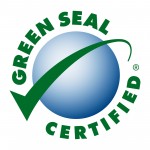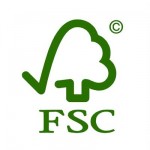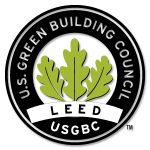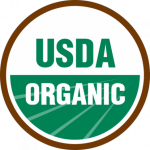Green Products
Demystify green products and how to tell if that is really a green product or a fake?
Demystify green products and how to tell if that is really a green product or a fake?
Choosing to lead a sustainable lifestyle can be rewarding and beneficial to future generations, though it is not without its fair share of challenges. With savvy marketers and the need for every product to have a competitive advantage, labeling may not always indicate that a product is truly green. Whether the label indicates “Earth Friendly” or “Green”, some advertising will leave an eco-conscious shopper duped into buying a “fake” green product. Green product selection often involves making trade-offs between multiple environmental impacts. We are here to help demystify green products and arm you with the knowledge for making an informed sustainable product selection.
 Before we get started with how to identify a green product, we have to understand what the definition of a green product is. The terms “green” or “sustainable” often refer to products, services or practices that allow for economic development while conserving for future generations. We prefer to describe a green product as one that has less of an environmental impact or is less detrimental to human health than the traditional product equivalent. While on the topic of defining a green product, you must realize that almost no product will ever be 100% “green,” since all product development will have some impact on the surrounding environment. It all comes down to degrees of impact and as we discussed above, trading off between impacts.
Before we get started with how to identify a green product, we have to understand what the definition of a green product is. The terms “green” or “sustainable” often refer to products, services or practices that allow for economic development while conserving for future generations. We prefer to describe a green product as one that has less of an environmental impact or is less detrimental to human health than the traditional product equivalent. While on the topic of defining a green product, you must realize that almost no product will ever be 100% “green,” since all product development will have some impact on the surrounding environment. It all comes down to degrees of impact and as we discussed above, trading off between impacts.
To understand the trade-offs you should realize that there are select attributes that describe green products and services; we list them below to help you further understand what a green product truly is. Green products are…
When looking for green products, there are a couple of ways you can ensure you are not being duped into buying a fake, though it can be tricky. A stroll through any supermarket will yield products labeled “earth friendly,” “eco-friendly,” “biodegradable” and many other buzzwords which will make you feel warm and fuzzy about the purchase, even though this could be false. A good rule of thumb is to look for the certification labeling, if that is not on the product then keep on walking. This leads us into what certification labels are available and what do they mean, which is why we have put together the list below. This is not an all encompassing list, it will however provide you with the most common certifications and their meaning.
 ENERGY STAR: A labeling program for energy efficient homes, building products, electronics and appliances. ENERGY STAR is a joint program of the U.S. Environmental Protection Agency and the U.S. Department of Energy helping protect the environment through energy efficient products and practices.
ENERGY STAR: A labeling program for energy efficient homes, building products, electronics and appliances. ENERGY STAR is a joint program of the U.S. Environmental Protection Agency and the U.S. Department of Energy helping protect the environment through energy efficient products and practices.
 Green Seal: Green Seal Certification ensures that a product meets rigorous, science-based leadership standards. It is a lifecycle assessment based labeling program for building products, green operations and maintenance procedures. A green seal can be found on anything from a coffee filter to a hotel.
Green Seal: Green Seal Certification ensures that a product meets rigorous, science-based leadership standards. It is a lifecycle assessment based labeling program for building products, green operations and maintenance procedures. A green seal can be found on anything from a coffee filter to a hotel.
 Forest Stewardship Council: A certification program for wood products that come from forests that are managed in an environmentally responsible, socially beneficial and economical viable way. They are a non-profit organization, not affiliated with the government, working to promote responsible management of the world’s forests since 1993.
Forest Stewardship Council: A certification program for wood products that come from forests that are managed in an environmentally responsible, socially beneficial and economical viable way. They are a non-profit organization, not affiliated with the government, working to promote responsible management of the world’s forests since 1993.
 Leadership in Energy and Environmental Design (LEED): The LEED certification was created by the U.S. Green Building Council in 2000, it in an internationally recognized standard for green building and design. The rating system works off 5 categories and is associated to both business and residential buildings. LEED focuses on whole building sustainability which can be used by diverse professionals and government agencies. You could look for the LEED seals when looking to purchase green homes or office buildings, as an example.
Leadership in Energy and Environmental Design (LEED): The LEED certification was created by the U.S. Green Building Council in 2000, it in an internationally recognized standard for green building and design. The rating system works off 5 categories and is associated to both business and residential buildings. LEED focuses on whole building sustainability which can be used by diverse professionals and government agencies. You could look for the LEED seals when looking to purchase green homes or office buildings, as an example.
 USDA Organic Product: When looking to go green at the dinner table many will look for certified organic foods. The United States Department of Agriculture has implemented the National Organic Program, which will indicate whether an agricultural product was produced in such a way that integrates biological, cultural and mechanical processes to conserve biodiversity and foster cycling of natural resources. In general this means synthetic fertilizer, irradiation or genetic engineering practices will not be used.
USDA Organic Product: When looking to go green at the dinner table many will look for certified organic foods. The United States Department of Agriculture has implemented the National Organic Program, which will indicate whether an agricultural product was produced in such a way that integrates biological, cultural and mechanical processes to conserve biodiversity and foster cycling of natural resources. In general this means synthetic fertilizer, irradiation or genetic engineering practices will not be used.
Green products are now mainstream, whether you are looking for a new home, automobile or even just some vegetables for a salad, there is a green product alternative available. It is up to you to weigh your options and identify what attributes of a green product is important to you; though make sure you are fully informed and aware prior to making the purchase. We applaud your commitment to sustainable living and look forward to building a greener future.